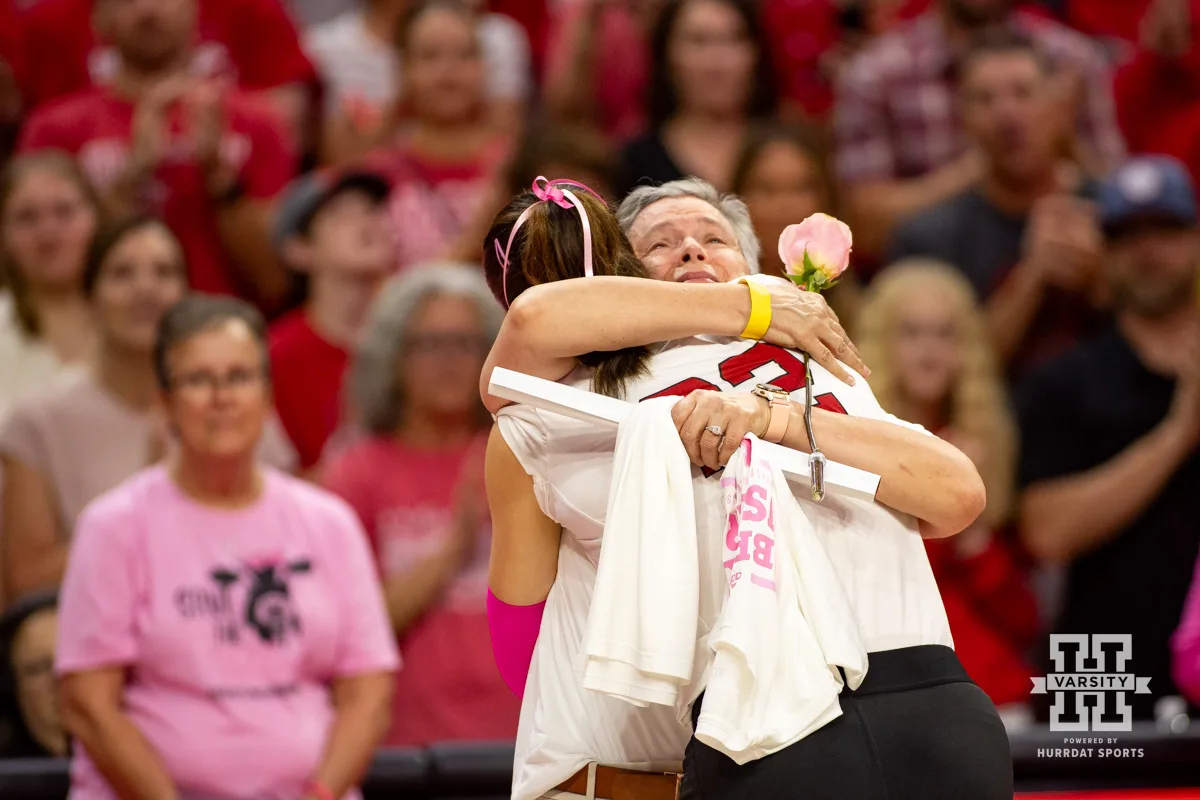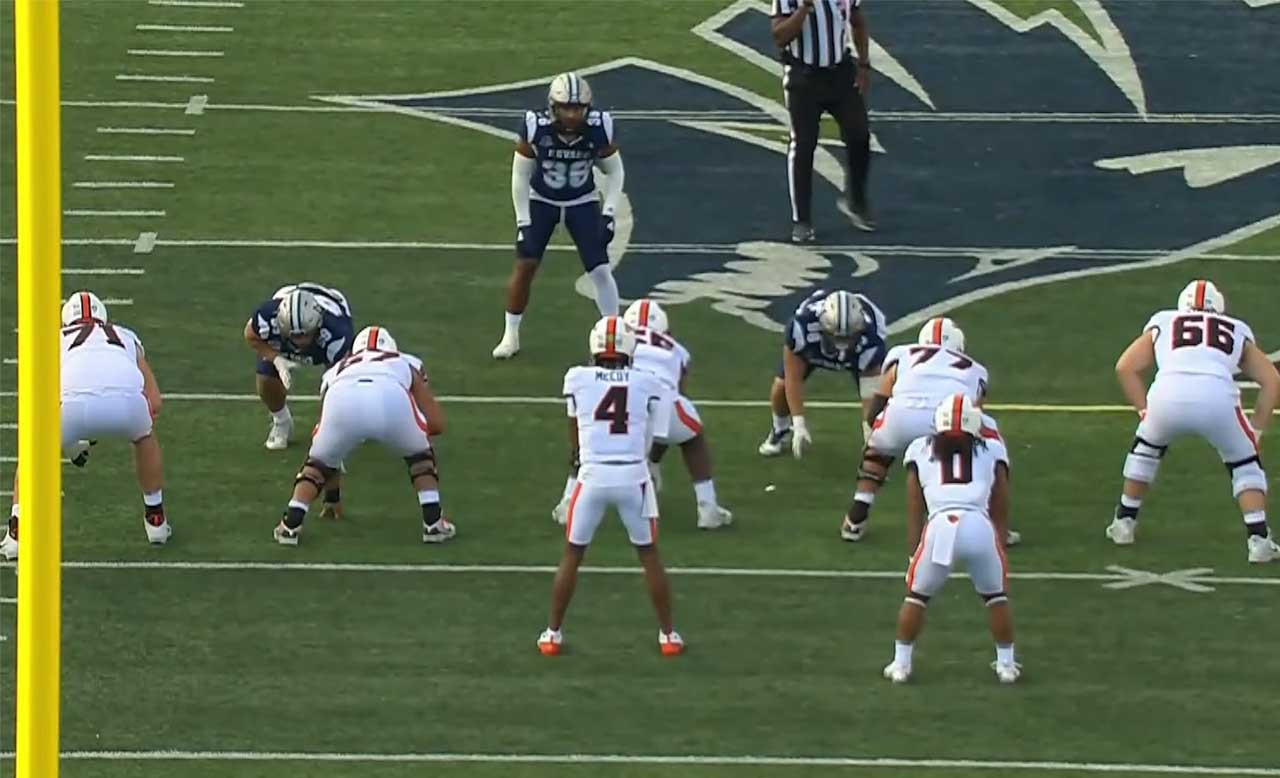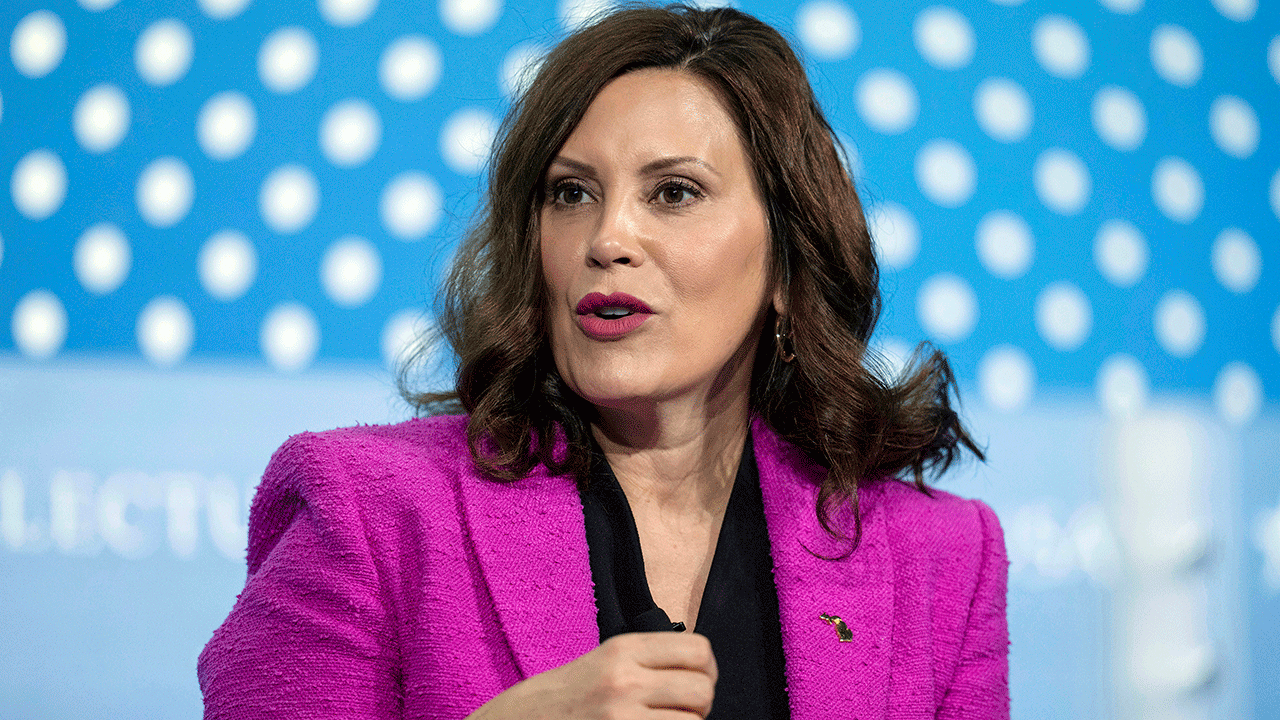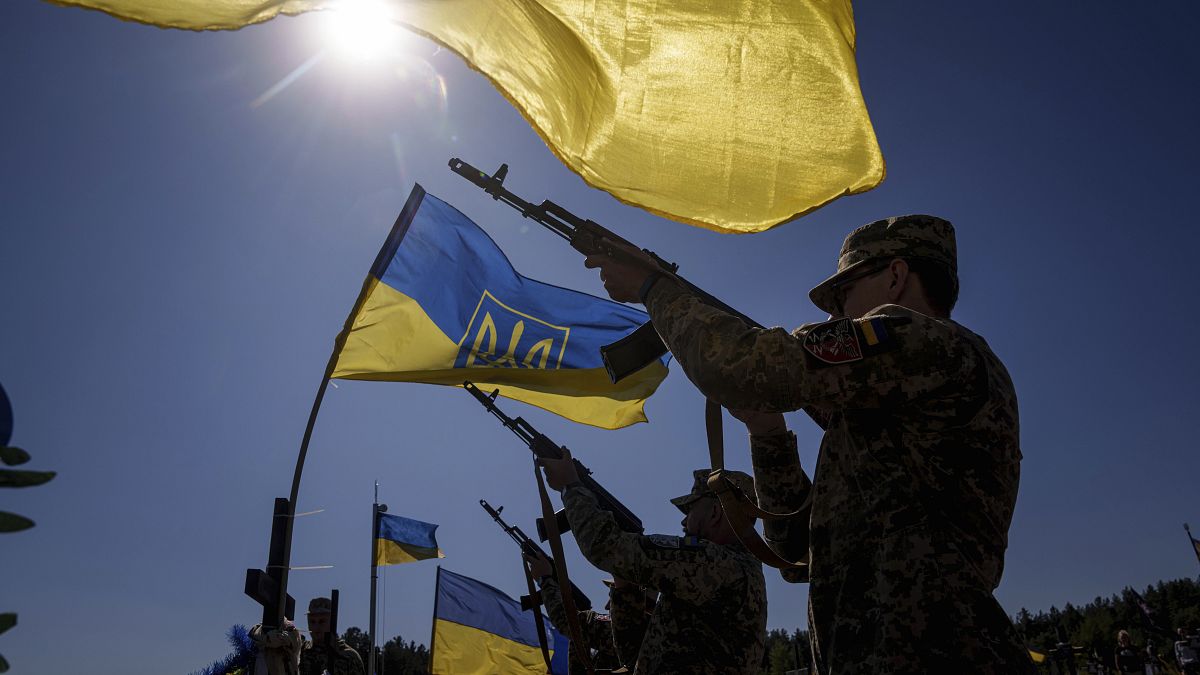Iowa
Is there life on Mars? This Iowa astronaut thinks so — and she wants to find it.
Even though Peggy Whitson raked in enough awards to require multiple reinforced mantels, she never really thought of herself as a role model.
She was an astronaut, sure; the job that invented the rarely achievable X-factor of “right stuff.” But role models were people like Eleanor Roosevelt or Marie Curie, people who actually changed the world.
But then a cartoon, hand-snipped from the comics pages of a newspaper, was mailed to her attention.
In the drawing, a mother is holding up a princess Halloween costume while a little girl looks at a computer screen plastered with the picture of an animated Whitson floating in space.
“I don’t want to be a princess,” the girls says. “I want to be a space commander!”
Seeing is believing. Whitson knew that intellectually — especially considering NASA didn’t start accepting women into the astronaut program until the year she graduated from high school — but the simplicity of the cartoon gave her a visceral understanding. The cartoon was a doodled gut punch to get out there and share her story of the improbable rise of a farmer’s daughter from Beaconsfield, one of the very smallest towns in Iowa, to the American with the most time in space — ever.
More: Meet 17 Iowa women who changed the world
While the stars always held young Whitson’s fascination, her earliest love of science came from watching the life cycles of soybeans in her dad’s fields. After graduating from Mount Ayr Community High School in 1978, she attended Iowa Wesleyan College, receiving a degree in biology and chemistry. She then earned a doctorate in biochemistry from Rice University, in Houston. A few years later, she married Clarence Sams, also a Ph.D. and veteran NASA researcher.
Since retiring from NASA, Whitson joined Axiom Space, a private company building the first commercial space station. After more than 20 years as an astronaut — a tenure that includes the superlatives of being the first female commander of the International Space Station and first female chief of the Astronaut Office — Whitson’s story is far from over.
And with the explosion of commercial space, which she says opens up greater access to the stars, Whitson might just be getting to the most exciting chapter.
“Space is a very expensive thing, but by commercializing it, giving more opportunities, having more companies involved, we are decreasing costs,” she says, “and therefore making it more and more accessible not only to people, but to all the investigators, the scientists, who want to get their research done.”
“I’d love to encourage young people to get excited now because there’s going to be so many opportunities in the coming years that just weren’t there before.”
Especially, she adds, if we are going to get to Mars — and beyond.
While in town for a recent Capital City Pride event at the Drake Municipal Observatory, I spoke with Whitson about how the next breakthrough cancer treatment might come from space, plans for a new Space Station and whether there actually is life on Mars.
Crowder: Watching the moon landing in 1969 was the beginning of your obsession with space. Can you describe what made that night on your parents’ farm in Beaconsfield so special?
Whitson: My mom was really strict on bedtime, but that night, after we got in pajamas, she said, ‘Come back down and we’re gonna watch this.’ Even as a 9-year-old, I recognized that this was something very, very big — and being a part of something bigger than me became very, very important.
Coming from a little town in Iowa, you grow up thinking your whole world is my farm. Then you go to school and your world gets a little bigger by a couple of towns. And you go off to college in another city and so your world starts expanding. I started work and school in another state. Then I started working in Russia, so ‘home’ became the whole United States. And then you leave the planet and the whole place is ‘home.’
Spaceship Earth, as I call it, is home.
Most grade-school students have seen pictures of Earth taken from space, but you got to see it with your own eyes. Is it possible to sum up what that was like?
The best analogy I have for that is it’s as if I spent my whole life living in a semi-dark room and somebody turned the lights on. That was my first look outside. The clarity, the visual sensations were just that dramatic a change. And then to do a spacewalk is like taking your first walk outside on a sunny, sunny day.
You retired from NASA in 2018 and joined Axiom Space. Tell me about that work.
Axiom Space won a contract with NASA to use the forward-most port of the International Space Station to begin building the first commercial station. We’ll separate from the I.S.S. when it’s decommissioned in 2030 and then we’ll have an independent orbiting commercial station.
In the meantime, we are doing these precursor missions. In 2022, we had the first Axiom mission go to the Space Station. And this year, I took three private astronauts: One was an individual from Knoxville, Tennessee, and two were from Saudi Arabia, including the first Arab woman to fly in space.
Now, I am working with the Axiom team that is building the spacesuit that will be used when NASA sends the first people back to the moon.
More companies than ever are vying for a piece of the stars. Given you background in biochemistry, what’s your vision for this new era in space travel?
What I envision, based on all the research I have done, is that we’re going to start manufacturing things for people on Earth that we can only manufacture in space. We can create lenses and superconductor crystals better in space than we can on Earth, for example.
Pharmaceuticals are going to be a big one. One of my favorite experiments was the cancer research we were doing on my last mission. We were looking at different types of cancer cells, breast cancer cells and colorectal cancer cells, which are both leading causes of cancer.
When you’re trying to do experiments on the ground with cancer cells, sometimes it’s hard to develop therapies and drug treatments because the cells don’t act the same way they do when they’re in your body. But cancer cells in space actually grow more like they do in your body. And we think by using microgravity as a model system, we could actually develop drugs and therapies that are going to be more effective here on the ground.
What’s holding us back from going to Mars and what’s needed to make that trip?
We’ve got to get over the radiation that astronauts would encounter. The best way to get through that would be to get there faster because radiation impacts are a function of time. Nowadays, conventional engines would take us six to nine months to get to Mars. If we use nuclear engines, we could potentially get there in three, and so you would reduce your risk by half.
But the life support systems, the water reclamation systems are absolutely critical for going to Mars or the moon because we don’t want to have to take water with us; it’s too heavy.
Going back to the lunar surface, we are going to use the surface materials, the soil, to try and build structures. To be able to do that on the Martian surface is a good thing, so practicing it on the moon is great. Also pulling hydrogen out of the lunar surface is going to be a good practice as it could become a fuel depot for missions that are going further beyond the moon.
If you went to Mars, what would you look for?
I’d like to look for signs of life or previous life. There’s a lot of indications that suggests it might have been there or might still be there. We know from a lot of places on Earth that we can find life in places that are completely unexpected, in sulfur mines, for example. Lots of different situations provide opportunities for life to be present.
Did you ever see alien activity while in space?
No, I never did. But there’s always things that you see where you’re thinking, ‘Oh, I wonder what that is.’
You were rejected for 10 years before being accepted into the astronaut program. What’s your advice for people facing hard denials?
Looking back on my life, I think one of the most valuable lessons for me has been to do things that I didn’t know I could do. I like to say it’s living a little bit outside your comfort zone. If you think, well, I might not be able to do that or I might not be successful in doing that, then you’re never going to find out what you’re truly capable of.
I always wanted to be an astronaut. I didn’t ever think I necessarily would become a commander, didn’t necessarily think of leading the astronaut office. These are things that came from challenging myself to live a little bit outside my comfort zone.
OK, speed round. What’s your favorite space movie? I really love “The Martian.” They got the NASA culture down pretty well.
Must-haves for space travel: We are allowed to take a few personal items, and on every one of my spaceflights I took this necklace I wore when I got married.
Best space food: Chicken fajita.
Real food you couldn’t wait to eat: After my first trip, I wanted steak and Caesar salad. My third flight was pizza. I’d been up there for like eight months and one of the guys on board was talking to the ground team and he said “pizza delivery,” so for the last month and a half I wanted pizza.
Best astronaut prank: My fun thing, having had so much experience in space, is when the new guy shows up on board the space station, their brains are still working in gravity. You ask them to throw you something across the module and they’re correcting for gravity. So it’s always gonna bounce off the ceiling.
Most difficult subject in astronaut training: Orbital mechanics.
You just got back in May, but when’s your next trip: I’m training right now as the backup commander for the Axiom-3 mission, which is planned for January.
This conversation includes excerpts from a private interview as well as Whitson’s public comments. It was lightly edited and condensed for clarity and space.
Courtney Crowder, the Register’s Iowa Columnist, traverses the state’s 99 counties telling Iowans’ stories. Her favorite space movie is “Alien.” Reach her at ccrowder@dmreg.com or 515-284-8360. Follow her on Twitter @courtneycare.

Iowa
Iowa football isn’t always pretty, but because of Kirk Ferentz, it has punched above its weight class

IOWA CITY, Iowa — In unseasonably warm air and beneath a blueish haze over Kinnick Stadium, Iowa coach Kirk Ferentz took a moment to himself with two minutes left and his team wrapping up a 40-16 win against Washington.
Ferentz stood apart from his team on the sideline with his headset on as his offense huddled during the media timeout. On the video board, his picture appeared. Public address announcer Mark Abbott relayed that Ferentz was about to win his 200th game as Iowa’s head coach, passing Amos Alonzo Stagg for second in Big Ten history. The crowd stood and applauded, and Ferentz acknowledged them with a wave.
GO DEEPER
Iowa coach Kirk Ferentz earns 200th career win as Big Ten coach
Tight end Luke Lachey gave him a hug, as did running back Kaleb Johnson. Backup quarterback Marco Lainez III shook his hand. With 33 seconds left, Ferentz walked to the TigerHawk at midfield, shook hands with Washington counterpart Jedd Fisch and completed an interview with Fox Sports. More subdued than emotional, Ferentz jogged off the playing surface, up the tunnel and into Iowa’s locker room where his players welcomed him with a water bottle shower.
Sunshine and 70-degree days — literally or figuratively — rarely have followed Ferentz into October in his coaching career, so the picturesque autumn setting was abnormal for college football’s longest-tenured coach. However, how Ferentz and the Hawkeyes responded to a 35-7 loss to Ohio State last week went entirely by script.
There are two defining characteristics through the highs and lows of Ferentz’s 26 years at Iowa: One, his players trust him and believe in him. The other truth is, no football coach — thus, no program — responds better to adversity than Ferentz and his Hawkeyes.
Ferentz’s entire career has revolved around continual improvement. And Iowa has gone very far following Ferentz’s ethos.
“He’s the same person every day,” said left tackle Mason Richman, who is in his fifth season. “He brings the same exact energies. You know exactly what to expect from him, no matter what the scoreboard says.”
Iowa rarely recruits five-star players and mostly signs three-star prospects. Only once in his career did Iowa finish in the top 15 in national recruiting, and that was in 2005. The Hawkeyes are a low-offer program because they heavily research character in recruiting. They want high achievers with good grades who were team captains in multiple sports. To Ferentz and his staff, those players invest themselves and improve others.
“I feel like we recruit the type of the right type of guys,” Iowa linebacker Jay Higgins said. “We just don’t have selfish guys in the locker room. So when you have good guys who understand what a team should look like, and then you also have a good leader, it’s easy to stand together. I just think this team, this program, anytime there’s adversity, we only get closer.”
Those types of players are built to handle challenges, and Iowa continues to have the right coach to navigate them through it. The examples in Ferentz’s era abound.
• In 2016, the Hawkeyes gave up 599 yards in a 41-14 massacre at eventual Big Ten champion Penn State. As a three-touchdown home underdog to No. 2 Michigan the following week, Iowa bounced back with a stunning 14-13 upset.
• Sitting at the midpoint of the 2008 season, Iowa was 15-16 over 2 1/2 seasons. Ferentz never wavered, and neither did his team. The Hawkeyes won their final four games to end that season, and then their first nine in 2009. They finished with their highest final ranking (No. 7) since 1960.
• In 2014, Iowa continued a slope of mediocrity by losing all four rivalry trophy games and finishing 7-6. The next year, dubbed “New Kirk,” Ferentz switched practices from afternoon to morning and became much more open in the public. The players responded in 2015 with a spirit of togetherness, leading to a school-record 12 wins. From that year onward, Iowa ranks tied for 10th among power-conference teams in victories.
• Two years ago, Iowa’s offense was among the nation’s worst in every category. After a 7-3 season-opening win against South Dakota State in which the Hawkeyes scored on two safeties and a field goal, linebacker Jack Campbell shot down any question that dealt with division. Campbell’s attitude set the tone for that season and it carried over to 2023, in which Iowa’s offense posted the Big Ten’s worst statistical numbers in nearly 40 years. Yet there was no sniping, let alone dissension. The team eventually claimed the Big Ten West Division crown.
• In 2004, Iowa started 2-2, including a 44-7 loss at Arizona State. Despite losing four scholarship running backs to injury, the Hawkeyes held it together with defense mixed with an occasional highlight-reel play. The Hawkeyes won their final eight games, claimed a share of the Big Ten title and won the Capital One Bowl with a 56-yard touchdown pass on the game’s final play.
That 2004 team was honored Saturday before the second quarter to rousing applause. One of its stars, defensive tackle Jonathan Babineaux, was Iowa’s honorary captain on Saturday. It was a team molded by adversity, and it charted an unconventional path of success. It even took a safety midway through the fourth quarter against Penn State in a 6-4 win. Ferentz gave the eulogy at his father’s funeral in Pittsburgh the day before that game.
Most teams would have crumbled in any of those situations, but Iowa never did.
Why? Ferentz.
“It’s definitely his leadership,” Higgins said. “He truly only cares about the guys in the locker room. When you’ve got a guy like that thinking you’re able to respond, it’s nice. He’s not gonna freak out. Doesn’t matter what the headline is. He’s not gonna come to the meeting room and read off the headlines. He keeps his voice, and we all respond off him. If he’s calm and he knows that we need to respond after a bad game or a tough situation, we’re all going to follow that.”
None of those anecdotes mean Ferentz is perfect. Far from it. Critiques are plentiful about his son, Brian, running his offense for seven years, especially when the final three were so rough. Brian remained in place until university president Barbara Wilson and athletic director Beth Goetz stepped in and dismissed him following the 2023 season. Other complaints about Ferentz’s game-day decision making are fair.
And in 2020, dozens of former players accused the program of racial insensitivity and bias, which was confirmed through an independent investigation. Instead of resisting necessary changes or stepping down, Ferentz opted for a new course. He accepted responsibility and sought counsel from former players, relieved longtime strength coach Chris Doyle and extended a leadership council to include more voices. Many arbitrary rules such as not using X or wearing hoodies in the football complex were vacated. Although some feel the changes didn’t go far enough — while others believed they went too far — there’s no doubt the program has become more welcoming to all players. Its attrition rate is among the lowest in the Big Ten, and it has won the third most games in the Big Ten since that season.
With Ferentz’s guidance, Iowa has punched well above its weight class.
Its recruiting rankings are closer to those of Illinois and Purdue than Michigan and Penn State, yet the Hawkeyes’ results are closer to the latter. Iowa finds ways to win where its peers fall short. It’s not always pretty and perhaps it won’t ever win the ultimate prize. But that Iowa remains anywhere near the College Football Playoff rankings most years is a credit to Ferentz.
“I appreciate him how much this program means to him,” Richman said. “When you get an appreciation like that, you’re less stressed out. With him at the helm, this place has a really special place in my heart and the hearts of many across the entire state.”
(Top photo of Kirk Ferentz: Matthew Holst / Getty Images)
Iowa
What channel is Iowa State vs. West Virginia game tonight (10/12/24)? FREE LIVE STREAM, Time, TV, Channel for college football, Week 7

The No. 11 Iowa State Cyclones, led by quarterback Rocco Becht, face the West Virginia Mountaineers, led by quarterback Garrett Greene on Saturday, Oct. 12, 2024 (10/12/24) at Mountaineer Field at Milan Puskar Stadium in Morgantown, W. Va.
How to watch: Fans can watch the game for free via a trial of DirecTV Stream or fuboTV. You can also watch via a subscription to Sling TV.
Here’s what you need to know:
What: NCAA Football, Week 7
Who: Iowa State vs. West Virginia
When: Saturday, Oct. 12, 2024
Where: Mountaineer Field at Milan Puskar Stadium
Time: 8 p.m. ET
TV: FOX
Live stream: fuboTV (free trial), DirecTV Stream (free trial)
***
Here are the best streaming options for college football this season:
Fubo TV (free trial): fuboTV carries ESPN, FOX, ABC, NBC and CBS.
DirecTV Stream (free trial): DirecTV Stream carries ESPN, FOX, NBC and CBS.
Sling TV ($25 off the first month)– Sling TV carries ESPN, FOX, ABC and NBC.
ESPN+($9.99 a month): ESPN+ carries college football games each weekend for only $9.99 a month. These games are exclusive to the platform.
Peacock TV ($5.99 a month): Peacock will simulstream all of NBC Sports’ college football games airing on the NBC broadcast network this season, including Big Ten Saturday Night. Peacock will also stream Notre Dame home games. Certain games will be streamed exclusively on Peacock this year as well.
Paramount+ (free trial): Paramount Plus will live stream college football games airing on CBS this year.
***
Here’s a preview capsule via the Associated Press:
No. 11 Iowa State (5-0, 2-0 Big 12) at West Virginia (3-2, 2-0), Saturday, 8 p.m. ET (Fox)
BetMGM College Football Odds: Iowa State by 3.
Series record: West Virginia leads 6-5.
WHAT’S AT STAKE?
Iowa State is off to its best start since 1980, and a win would make them 6-0 for the first time since 1938. The Cyclones are looking to extend their road winning streak to seven games. West Virginia is going after its third straight win after a 1-2 start. Iowa State and West Virginia are 2-0 in conference play. One of them will forge a first-place tie with idle Texas Tech.
KEY MATCHUP
Iowa State’s defense vs. West Virginia QB Garrett Greene. Of the dual-threat quarterbacks the Cyclones have faced so far, Greene could be the best. He had runs of 39, 15 and 10 yards against Oklahoma State last week and is averaging 5.4 yards per carry and 59 yards per game. Run defense hasn’t been a strength for the Cyclones, who hope to force Greene to try to beat them through the air. Iowa State has the Big 12’s top defense, allowing just 10 points and 272 yards per game.
PLAYERS TO WATCH
Iowa State: LB Kooper Ebel has led or co-led the team in tackles in three straight games. He made just three tackles in eight games as a freshman last year. He added 15 pounds to get up to 240 on his 6-foot-4 frame and has made at least six stops in all five games. Last week he had eight tackles and a quarterback hurry against Baylor.
West Virginia: RB Jahiem White. The sophomore ran for a season-high 158 yards in the lopsided win at Oklahoma State and the Mountaineers compiled 389 on the ground. White hopes to be back on track after being limited to 94 yards combined against No. 4 Penn State, No. 22 Pittsburgh and Kansas.
FACTS & FIGURES
Anthony Becht, a tight end for the Mountaineers from 1996 to 1999, will be honored during the game for his induction into the West Virginia Sports Hall of Fame. His son, Rocco, is Iowa State’s quarterback. … The Cyclones have won 12 straight when scoring at least 30 points. They’ve scored at least 30 in the last five meetings with WVU. … ISU had nine plays of 20 or more yards against Baylor last week, tied for the most by a Power Four team against a conference opponent this season. … The Cyclones’ defense gets better as the game progresses. They’re allowing an average of 4.0 points and 112 yards in the second halves. … West Virginia will wear all-black uniforms in honor of the state’s coal mining industry.
(The Associated Press contributed to this report)
Thank you for relying on us to provide the journalism you can trust. Please consider supporting us with a subscription.
Iowa
Rosemount H.S. Marching Band wins at Iowa competition

The Rosemount High School Marching Band is celebrating a big victory from a competition earlier this fall. In late September they took home the Class AAA Championship trophy at the Bands of America regional competition in Waukee, Iowa. Members of the band joined the FOX 9 Morning News to talk about the win and share how they are getting ready for another big competition this weekend at U.S. Bank Stadium in Minneapolis.
-

 World1 week ago
World1 week agoUkrainian stronghold Vuhledar falls to Russian offensive after two years of bombardment
-

 World1 week ago
World1 week agoWikiLeaks’ Julian Assange says he pleaded ‘guilty to journalism’ in order to be freed
-

 Technology1 week ago
Technology1 week agoBeware of fraudsters posing as government officials trying to steal your cash
-

 Health1 week ago
Health1 week agoHealth, happiness and helping others are vital parts of free and responsible society, Founding Fathers taught
-

 Sports1 week ago
Sports1 week agoFreddie Freeman says his ankle sprain is worst injury he's ever tried to play through
-

 News1 week ago
News1 week agoLebanon says 50 medics killed in past three days as Israel extends its bombardment
-
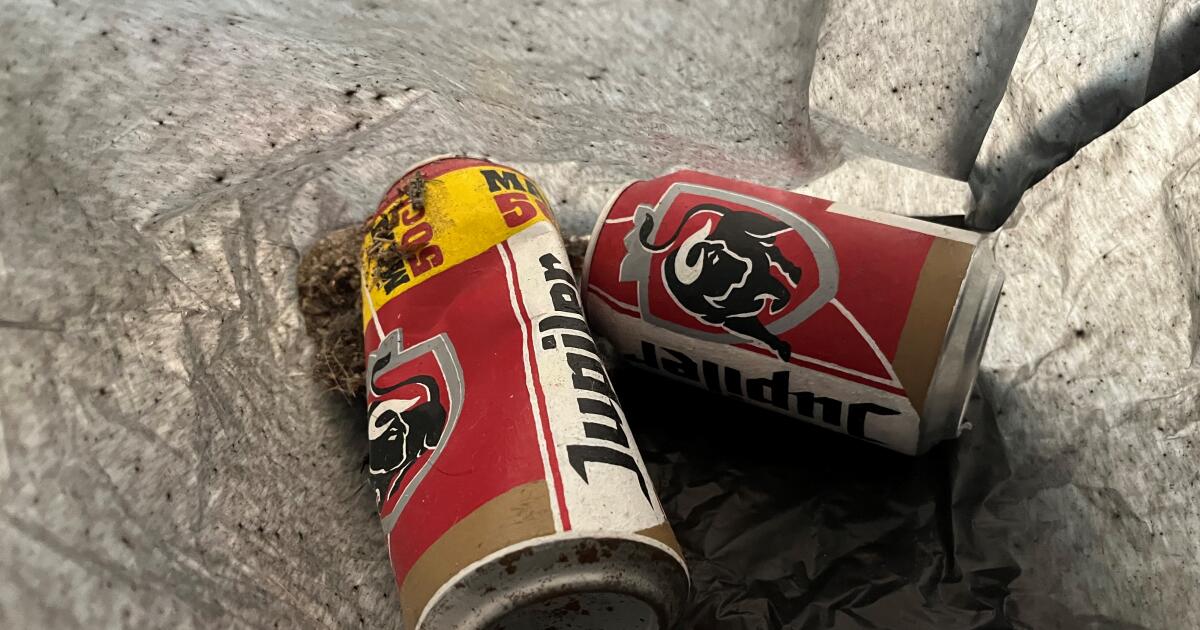
 Entertainment3 days ago
Entertainment3 days agoHold my beer can: Museum says a worker thought unique art installation was trash
-

 Entertainment4 days ago
Entertainment4 days ago'The Office' star Jenna Fischer reveals private breast cancer battle: 'I am cancer free'



